Rwanda
Deemed “Land of a Thousand Hills,” Rwanda is a beautiful country located in the heart of Africa, about two degrees or 75 miles south of the equator. It has a high elevation ranging from 1,000 to 4,416 meters above sea level, giving it a temperate climate that stays pleasant all through the year, with minor variations.
The capital is Kigali, located in the centre of the country on the Ruganwa River. It is known for Mountain gorilla trekking, birdwatching, classic game drives, nature walks, cultural experiences, hiking, and lakeside relaxation—these are just some of the ways to spend your vacation in Rwanda. Explore the country’s history, culture, and natural wonders as you embark on a journey through this inspiring destination.
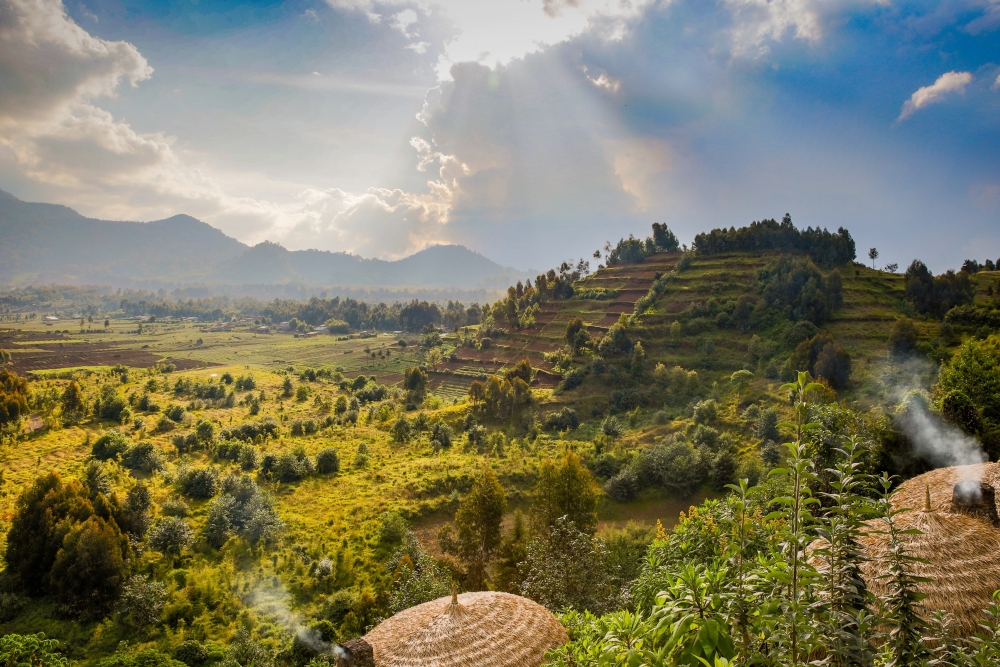
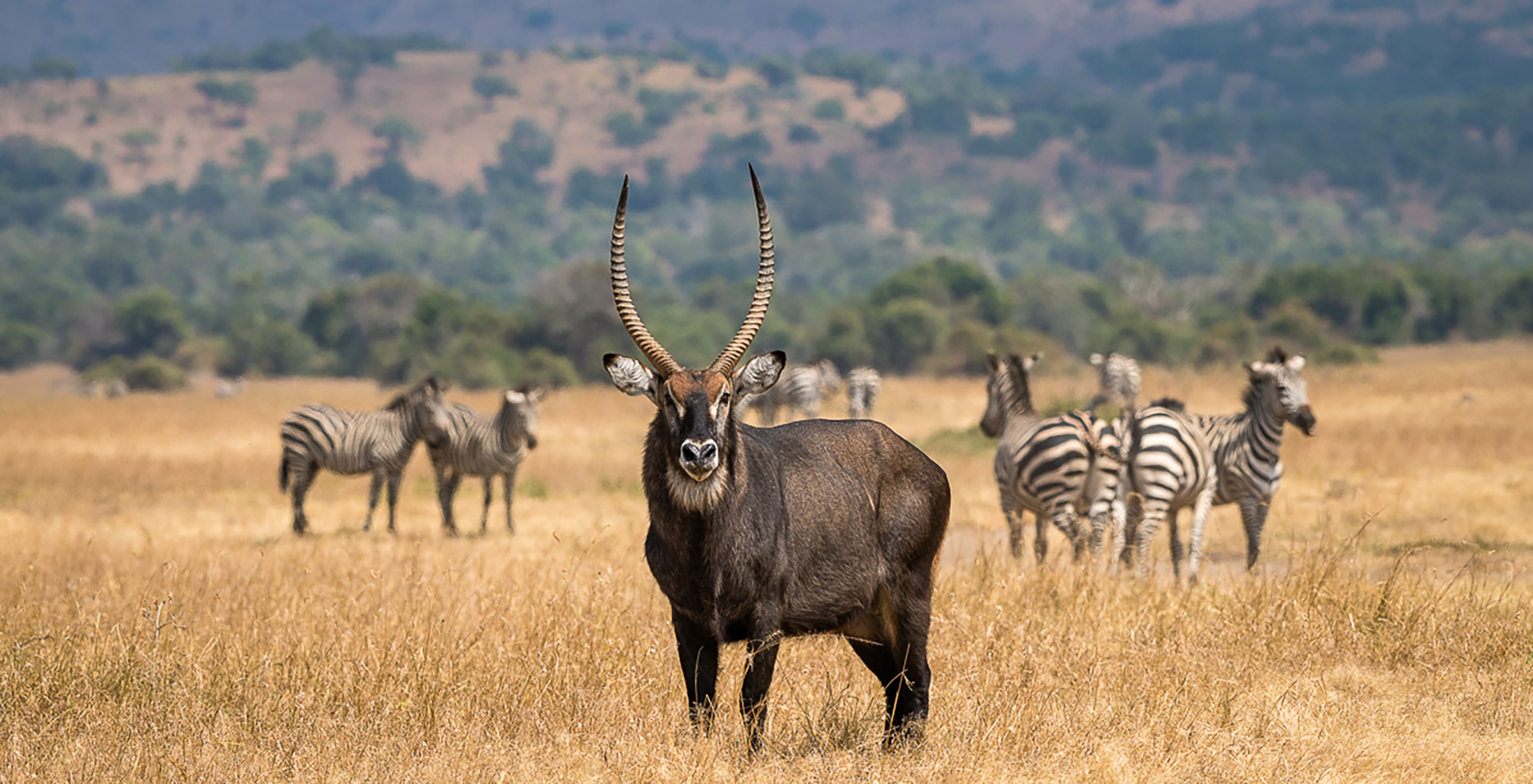
Akagera National Park
It is found in North Eastern Rwanda, at the country’s border with Tanzania. It is dominated by swamps and small lakes with flow in the wake of River Kagera.
The network of water sources and unique landscape together create very spectacular scenery. It is quite a remarkable eco-system. The Park was obviously named after River Kagera that feeds different water bodies including Lake Ihema.
Surrounded by cultivated hills, that are so much a part of Rwanda scenery, the scenery of Akagera national Park is quite simply beautiful. The landscape is low, composed of wide plains dominated by grass, cactus-like Euphorbia candelabra shrub and both thick and thin forests although it does carry on with the general rugged terrain that is so characteristic of Rwanda.
Gishwati Mukura National Park
Gishwati Mukura is made up of two separate forests – the larger Gishwati and small Mukura, forming a total of 34 square kilometres plus a buffer zone.
The forests sit on the ridge which divides the Congo and Nile water catchment areas, along the incredibly biodiverse Albertine Rift in the west of the country. It is made up of 60 species of tree, including indigenous hardwoods and bamboo.
Gishwati is home to a group of 20 chimpanzees which live alongside golden monkeys, L’Hoest’s and Blue Monkeys. Birds are well represented too, 232 species have been seen at Gishwati and 163 at Mukura, among them Albertine Rift Endemic species and forest specialists.
Activities in the park started in 2019 and include a guided nature hike, guided chimp and monkey tracking, bird watching and a visit to the waterfalls.
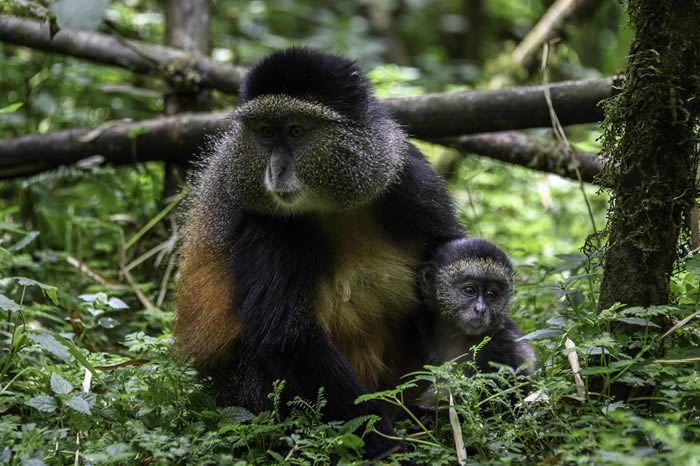
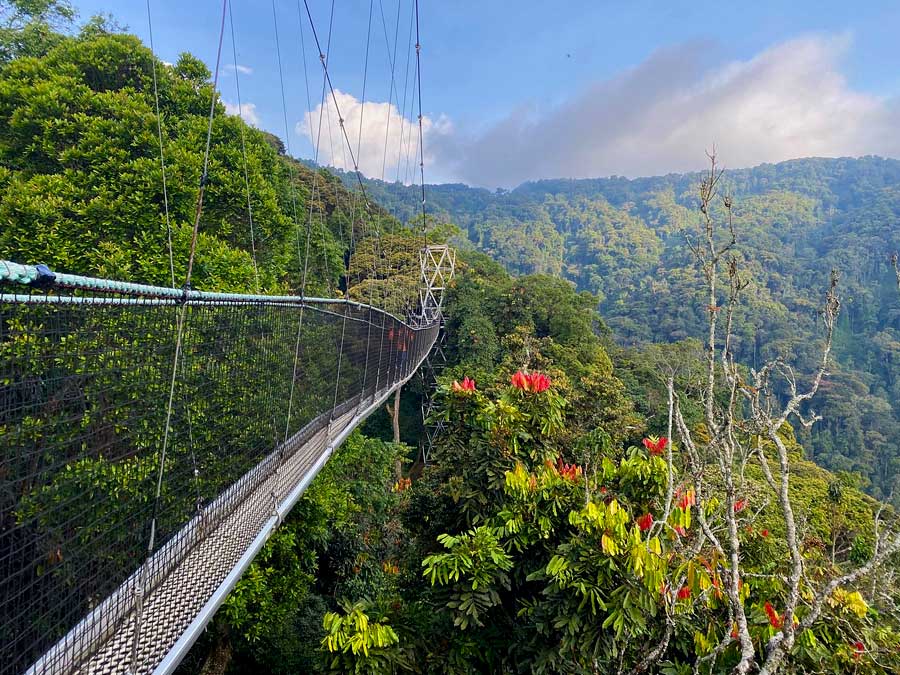
Nyungwe National Park
Nyungwe is one of the oldest rainforests in Africa, and the largest expanse of forest in Rwanda, covering 1,019 km2 of dense Afromontane forests, bamboo-covered slopes, grasslands and wetlands. The park feeds two of the world’s largest rivers, the Congo and the Nile, and provides a significant portion of Rwanda’s freshwater. Over 1,100 recorded plant species, 345 bird species and 85 known mammal species, including 13 of Africa’s primates – notably, chimpanzee, Ruwenzori black-and-white colobus and L’Hoest’s monkeys – are found in this exceptional landscape.
Memorable and photogenic moments include walking up to the Isumo waterfall or along the Canopy Walk suspension bridge. Tea plantations border the edges of the park, with a habituated troop of Ruwenzori colobus monkeys at Gisakura as well as forest fringe birds.
A ridge running through the forest forms a watershed between the drainage systems of the Nile and the Congo. A spring on the slopes of Mt Bigugu is said to be the most remote source of the Nile, the world’s longest river.
Volcanoes National Park
Situated in the far northwest of Rwanda, Volcanoes National Park protects the steep slopes of this magnificent mountain range – home of the endangered mountain gorilla and a rich mosaic of montane ecosystems, which embrace evergreen and bamboo forest, open grassland, swamp and heath.
Volcanoes National Park is named after the chain of dormant volcanoes making up the Virunga Massif: Karisimbi – the highest at 4,507m, Bisoke with its verdant crater lake, Sabinyo, Gahinga and Muhabura.
Tracking endangered mountain gorillas through the mysterious intimacy of the rain forest, alive with the calls of 200 species of colorful birds and chattering of the rare golden monkey, is only one of the truly unique experiences in the area.
Within the boundaries of Volcanoes National Park are Buhanga Eco-Park, an ancient forest holding Rwanda’s most intriguing folklore and Musanze Caves, formed 62 million years ago after the last estimated volcanic eruption.
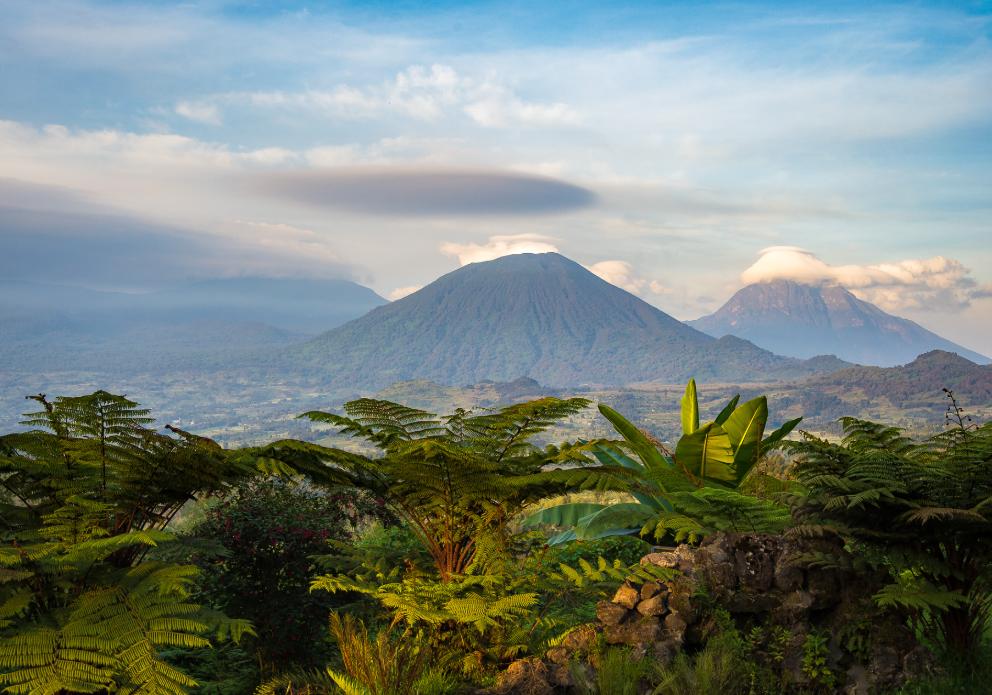
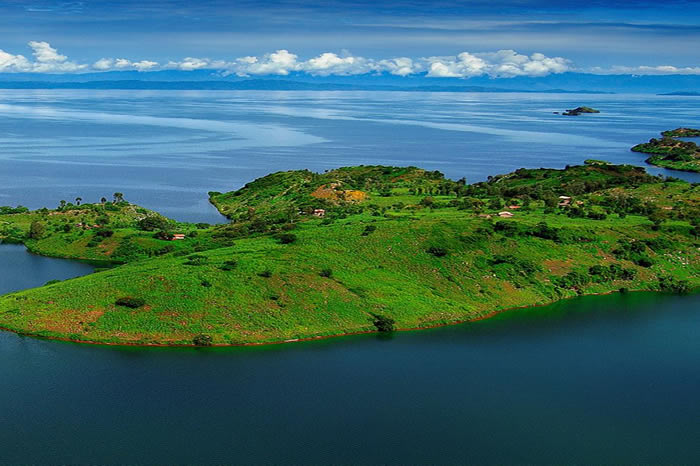
Lake Kivu
Part of Africa’s Great Rift Valley, Lake Kivu in the west of Rwanda is surrounded by magnificent mountains and has deep emerald green waters covering a surface area of 2,700 km2. It is Rwanda’s largest lake and the sixth largest in Africa.
Rubavu – previously known as Gisenyi – is a large town on the northern edge of Lake Kivu, an hour’s drive from Volcanoes National Park and the perfect place to relax after gorilla trekking. Once a colonial beach resort of note, Rubavu’s waterfront is lined with fading old mansions, hotels and trendy bars on the lakeshore, ideal for sundowner cocktails.
Karongi, half way along the lake, is a popular beach resort with hillsides covered in pines and eucalyptus serve as a backdrop to the sparkling lake. At dawn and dusk, the sound of local fisherman singing carries across the water as they paddle in unison.
From Rubavu in the north, the Congo Nile Trail extends 227 kilometres of breathtaking landscapes all the way to Rusizi in the south of Lake Kivu. The trail gently curves back and forth as it weaves through hills and mountains beside the lake with eucalyptus trees lining the road and every inch of the hills seemingly terraced with bananas.
For adventurous travellers, an exciting way to explore Rwanda is a kayaking tour on Lake Kivu, or mountain biking or hiking one of the 6 off-the-beaten path stages of the spectacular Congo Nile Trail.
